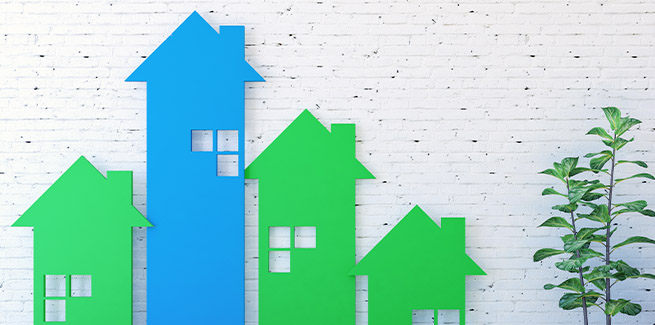In her analysis of the current upswing in the value of national dwellings, CoreLogic head of research Australia Eliza Owen said that a “striking feature” of the current boom is the pace at which the high end of the market has surged in recent months.
According to CoreLogic’s latest home value index results released on 1 March, Australian home values rose by 2.1 per cent in February 2021, representing the largest monthly rise in 17 years.
Ms Owen’s analysis of how this value rise has impacted certain markets found that the top 25 per cent of values in the combined capital cities rose 2.7 per cent in value, up from an increase of 0.5 per cent in January.
Explaining what constitutes the high end of a market, Ms Owen said CoreLogic measures it in its “tiered indices” series, where the high tier is the top 25 per cent of property values in any given region. As of February, this refers to dwelling values at around $960,000 or higher for the combined capitals, with a typical value in the high tier around $1.2 million.
Ms Owen said the middle 50 per cent of dwelling values increased by 1.5 per cent in February, while the low end of property values increased by 1.2 per cent.
She noted that the growth at the high end of the market has followed a steeper downturn during the peak of the coronavirus pandemic restrictions in 2020.
Over the course of 2020, the high tiered index had a peak-to-trough slump of 4.3 per cent, compared with a 1.6 per cent decline across the middle market, and a 0.8 per cent fall at the low end.
Commenting on her findings, Ms Owen said: “The low end of the market in the capital cities can be characterised by dwelling values sitting under $497,000. Looking at the time series, the resilience at the low end of the market during the downswing tends to be a common cyclical pattern, as does the outperformance of the high end of the market during an upswing.”
She also attributed the resilience in the low end of the market last year to the growth in the first home buyer (FHB) segment over the year, adding that this segment typically would target the lower value market segments due to affordability constraints.
She noted that data from the Australian Bureau of Statistics (ABS) indicated that the value of FHB lending increased 42.3 per cent in the year to January.
“As values rise in 2021, and incentives for first home buyers are tapered, the year ahead is likely to be characterised by lower levels of first home buyer participation,” Ms Owen said.
The ABS lending indicators data showed that in January 2021, the number of owner-occupier FHB loan commitments rose by 9.6 per cent, reaching the highest level since May 2009, while there was a 70.8 per cent rise in owner-occupier FHB loan commitments compared with January 2020.
Ms Owen said that of the capital city markets, the high end of values has led growth across Sydney, Melbourne and Canberra.
The combined capital cities index has shown a sizeable uplift in the high end of the market, which Ms Owen attributed to the relatively large size and value of these cities.
Look at the long-term patterns
Ms Owen said it is important to focus on the long-term patterns in growth across different segments of the market.
“High-end property markets may seem excessively risky during downturn periods because they tend to lose the most value in a negative economic shock,” Ms Owen said.
“However, what is being observed across the market at the moment is that periods of upswing deliver higher returns across the more expensive segment of the property market.
“Similarly, the low end of the housing market may appear subdued while the rest of the market is booming, but holds its value relatively well during downturns.”
Ms Owen said 10-year annualised growth rates of values within capital cities has been fairly uniform across the different value segments.
She concluded: “Over the course of 2021, the middle and lower value segments of the market are likely to follow the same trend as the high end, though growth rates are not expected to be as strong.”
[Related: Perth’s sales listings drop to 10-year low]
 ;
;
